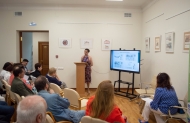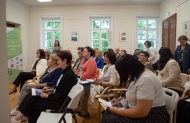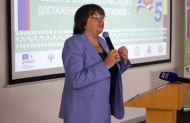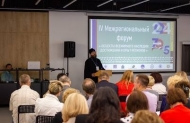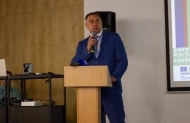
The Eurasian Peoples’ Assembly took part in the IV Interregional Forum "World Heritage Sites: Achievements and Regional Experience" in Pskov. Alana Kochieva, Head of the Directorate for Interaction with International Organizations, noted the importance of preserving outstanding architectural, historical and cultural heritage sites, as well as careful attitude to the intangible value of civilizational heritage.
The Forum "World Heritage Sites: Regional Achievements and Experience" this year was dedicated to the 70th anniversary of the USSR's accession to the United Nations Educational, Scientific and Cultural Organization (UNESCO) and the 5th anniversary of the inclusion of 10 temples of the Pskov School of Architecture in the UNESCO World Heritage List. The Forum is organized by the Ministry of Culture of the Russian Federation, the Government of the Pskov Region, the Pskov Diocese of the Russian Orthodox Church, the D.S. Likhachev Heritage Institute, the Union of Restorers of Russia, the Administration of the City of Pskov, the Pskov State United Historical, Architectural and Art Museum-Reserve, the Pskov State University and the National Centre for Monument Protection.
Last weekend leading specialists in cultural heritage protection from Russian regions: Pereslavl-Zalessky, St. Petersburg, Karelia, Vladimir, Yaroslavl and others came to ancient Pskov.
"Pskov is very careful about its past and this is important for protected cultural and historical sites. The city Kremlin and the abundance of ancient Orthodox churches and monasteries - they are located literally on almost every street in Pskov - is the first impression you get in Pskov, and this creates a particularly careful attitude to the harmony of the urban environment, where majestic ancient churches are integrated into modern urban solutions," recalls Alana Kochieva, a representative of the Eurasian Peoples’ Assembly of Peoples, the results of her work with colleagues in Northwest Russia.
Of the ten churches in Pskov to be restored, five have already undergone restoration work. Let us remind you that ten churches of the Pskov School of Architecture are included in the World Heritage List in the Pskov Region. These are the Cathedral of St John the Baptist of the Ivanovo Monastery, the Ensemble of the Spaso-Mirozhsky Monastery, the Transfiguration Cathedral, the Ensemble of the Snetogorsk Monastery, the Cathedral of the Nativity of the Mother of God, the Church of Michael the Archangel with a bell tower, the Church of the Intercession from Prolom, the Church of Cosmas and Damian from Primostye, the Church of St George from Vzvoz, the Church of the Epiphany with a belfry, the Church of Nikola from Usokha and the Church of St Basil on Gorka. The facade works on the main bell tower of Pskov, the bell tower of the Trinity Cathedral in the Pskov Kremlin, are also being finalized.
The forum colleagues discussed achievements in the field of restoration, tourism and popularization of World Heritage sites. "It is very important to share experience in preserving cultural heritage, which is the basis of knowledge about the history of our great homeland," emphasised Andrey Ermakov, Head of the Department of the Ministry of Culture for the North-West Federal District.
On behalf of the Pskov Diocese of the Russian Orthodox Church, Archbishop Matthew congratulated the participants of the event, wishing those present successful and fruitful work. The Forum was addressed by Vadim Nedik, Chairman of the Committee for the Protection of Cultural Heritage Objects of the Pskov Region; Svetlana Melnikova, Director General of the Federal State Budgetary Institution of Culture "Pskov State United Historical, Architectural and Art Museum-Reserve"; Anastasia Kileinikova, Deputy Head of the World Heritage and International Cooperation Department of the Pskov State Museum-Reserve of D.S. Likhachev Heritage Institute and Olga Serova, First Vice-Rector of Pskov State University.
Practical experience and technologies for the restoration of UNESCO sites and significant historical and cultural monuments of Eurasia have been accumulated in every country of the CIS and EAEU, where more than a hundred outstanding monuments of the past are located. Without the past there is no present, past is a bridge to the future. Activity in this area is a nationwide endeavor that has no boundaries and limitations. As Alana Kochieva noted, this is a great common meaning.





